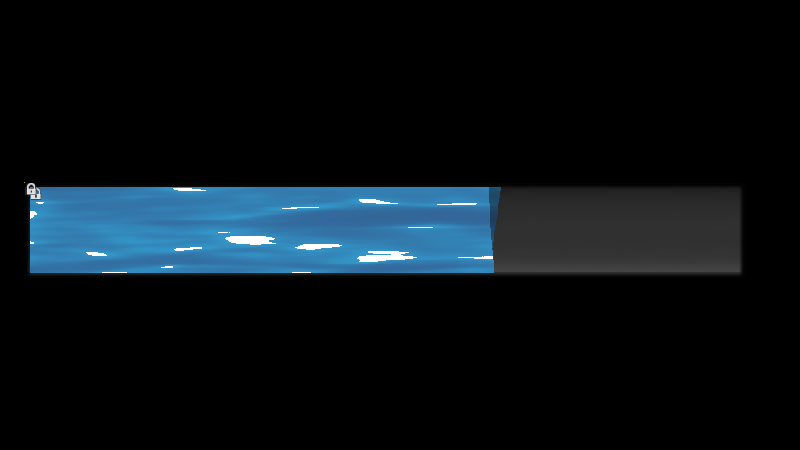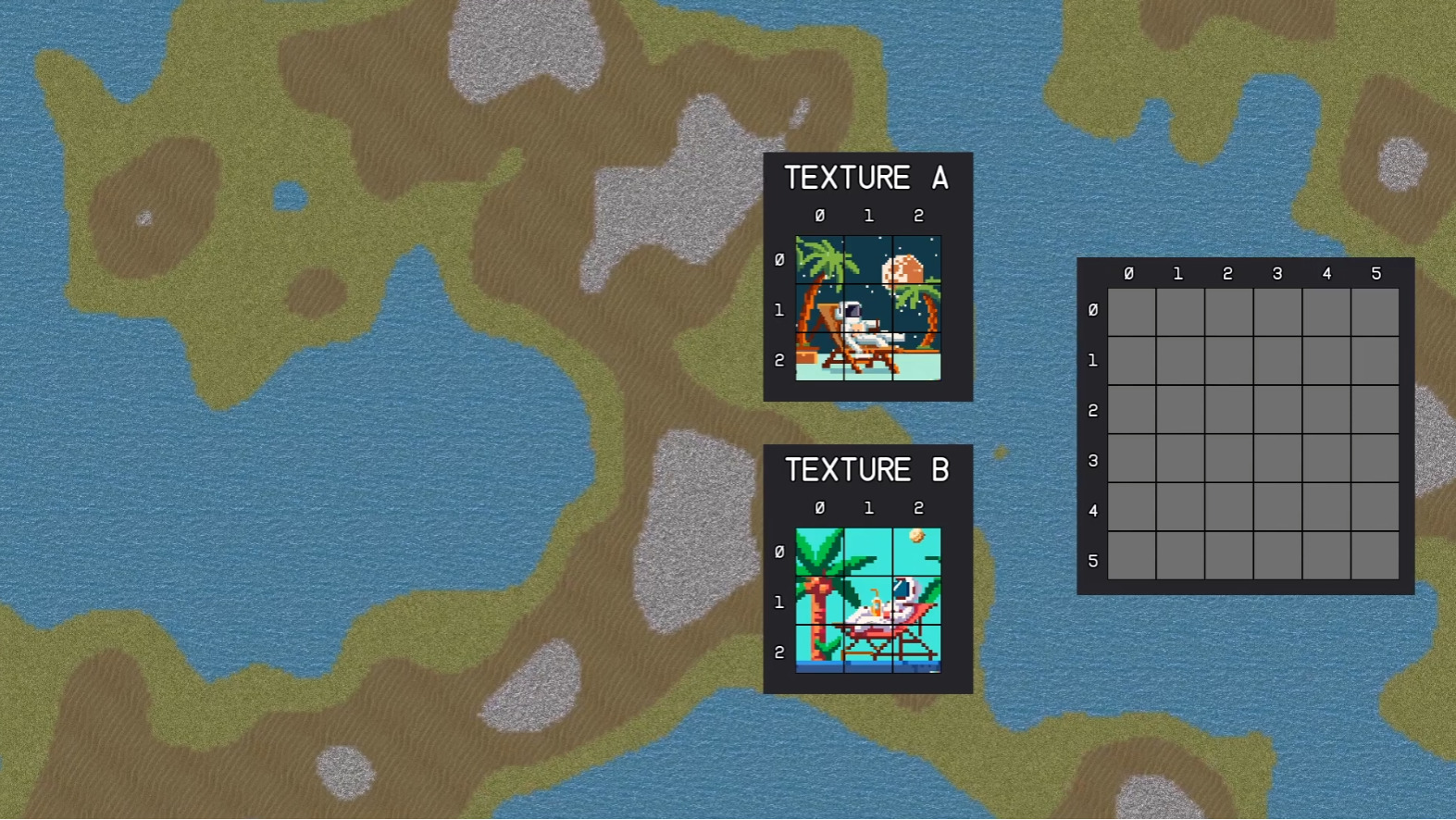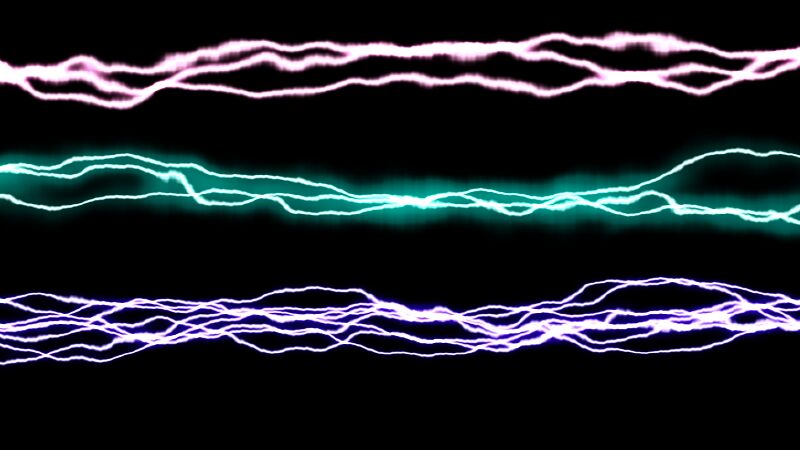Liquid progress bar
This is a shader I made for progress bars in my game by combining the following two shaders along with some other stuff from my own shaders.
I’ve exposed most of the useful configuration settings so you can adjust most things.
Note: Wave1 = Background, Wave2 = Foreground
- BG Color – Background color, can be transparent. In screenshots I have it transparent and a different box with a border behind
- UV Scale – Zoom level on water
- Percentage – The percentage fill of the bar
- Wave Shadow Mult – The shadow wave is multiplied by this to darken it
- Speed – Speed of water
- WaveX Speed – Speed of the waves.
- WaveX Freq – Frequency of waves
- WaveX Amp – Amplitude of waves
- Sun Dir – Sun Direction for highlights
- Water Color – Guess
- Foam Color – Guess
- Sky Color – I am sure you get it
- Specular Color – You’ll figure it out
If you wish to rotate the direction of the progress bar then look at line 116 of the shader
vec2 uv2 = vec2(UV.y, 1.0-UV.x);
Removing the 1.0- will flip it to be right to left. If you want it up to down flip the Y / X inside the vec2. Just play around with moving the X/Y and adding 1.0- in front of each of them until you get what you want.
Shader code
shader_type canvas_item;
#define iResolution 1.0/SCREEN_PIXEL_SIZE
#define iTime TIME
#define fragColor COLOR
uniform vec4 bg_color: source_color;
uniform float uv_scale : hint_range(0.0, 10.0, 0.1) = 1.0;
uniform float percentage: hint_range(0.0, 1.0) = 1.0;
uniform float speed = 1.0;
uniform float wave_1_speed = -1.0;
uniform float wave_2_speed = 1.0;
uniform float wave_1_freq = 1.2;
uniform float wave_2_freq = 1.0;
uniform float wave_1_amp = 0.015;
uniform float wave_2_amp = 0.01;
uniform vec3 sun_dir = vec3(-0.2, 0.4, 1.0);
uniform vec4 water_colour : source_color = vec4(0.2, 0.4, 0.6, 1.0);
uniform vec4 foam_colour : source_color = vec4(0.8, 0.9, 1.0, 1.0);
uniform vec4 sky_colour : source_color = vec4(0.2, 0.6, 0.8, 1.0);
uniform vec4 specular_colour : source_color = vec4(1.0, 1.0, 1.0, 1.0);
vec2 hash( vec2 p ) // replace this by something better
{
p = vec2( dot(p,vec2(127.1,311.7)), dot(p,vec2(269.5,183.3)) );
return -1.0 + 2.0*fract(sin(p)*43758.5453123);
}
vec4 wave( vec2 uv, vec4 wave_color, float level, float freq, float amp, float sin_shift, float speed1 ){
float sinus = sin( (uv.x + sin_shift + TIME * speed1) * freq) * amp;
float shifted_level = ( 1.0 + 2.0 * amp ) * level - amp; //shift to completely hide or fill
float treshold = step( 1.0 - sinus - shifted_level, uv.y);
return wave_color * treshold;
}
float noise( in vec2 p )
{
const float K1 = 0.366025404; // (sqrt(3)-1)/2;
const float K2 = 0.211324865; // (3-sqrt(3))/6;
vec2 i = floor( p + (p.x+p.y)*K1 );
vec2 a = p - i + (i.x+i.y)*K2;
float m = step(a.y,a.x);
vec2 o = vec2(m,1.0-m);
vec2 b = a - o + K2;
vec2 c = a - 1.0 + 2.0*K2;
vec3 h = max( 0.5-vec3(dot(a,a), dot(b,b), dot(c,c) ), 0.0 );
vec3 n = h*h*h*h*vec3( dot(a,hash(i+0.0)), dot(b,hash(i+o)), dot(c,hash(i+1.0)));
return dot( n, vec3(70.0) );
}
#define MAX_WAVES 4
#define SUPERPOSITION 4
#define TAU 6.28318
#define PHI 1.618
// closed form normal would increase performance a lot
float height(vec2 p, float t) {
float acc = 0.0;
for (int i = 0; i < MAX_WAVES; i++) {
for (int j = 0; j < SUPERPOSITION; j++) {
int seed = i + 5*j;
//float theta = TAU * noise(vec2(0.01 * t, 10.0*float(i)));
float theta = TAU * PHI * 10.0*float(seed);
float up = cos(theta) * p.x - sin(theta) * p.y;
float vp = sin(theta) * p.x + cos(theta) * p.y;
//float initial_phase = TAU * noise(vec2(0.0, 2.0*float(i))) + cos(vp);
float initial_phase = TAU * PHI * float(seed);
//float k = pow(2.0, float(i)*0.1) + 0.5;
//float k = pow(2.0, 1.0 + 0.4*float(i));
float k = pow(2.0, float(i));
//float k = float(i+1);
float phase = initial_phase + up*k + cos(vp) + 3.0*t + 0.5*k*t;
// its kinda like choose your artifacts, probably use noise for vp
float A = cos(phase)/(k*k);
acc += A;
}}
return acc;
}
vec4 hn_fdm(vec2 p, float t) {
float h = height(p, t);
vec2 vx = vec2(0.1, 0.0);
vec2 vy = vec2(0.0, 0.1);
float hx = height(p+vx, t);
float hy = height(p+vy, t);
float dx = (hx - h);
float dy = (hy - h);
// vec3 norm = normalize(vec3(-dx, -dy, dx+dy));
// vec3 norm = normalize(vec3(-dx/vx.x, -dy/vy.y, 1.0));
vec3 v1 = normalize(vec3(vx.x, 0.0, dx));
vec3 v2 = normalize(vec3(0.0, vy.y, dy));
vec3 norm = cross(v1, v2);
return vec4(norm, h);
}
void fragment()
{
vec2 uv = UV;
vec2 uv_screen = (uv - 0.5) * uv_scale;
vec4 nh = hn_fdm(uv_screen* 10.0, iTime * speed);
float h = nh.w;
vec3 norm = nh.xyz;
if (dot(sun_dir, norm) > 0.98) {
fragColor = specular_colour;
} else {
fragColor = mix(water_colour, sky_colour, dot(norm, normalize(vec3(0.0, 0.2, 1.0))));
}
vec2 uv2 = vec2(UV.y, 1.0-UV.x);
vec4 shadowWaveColor = fragColor * 0.6;
shadowWaveColor.a = 1.0;
vec4 wave1 = wave(uv2, shadowWaveColor, percentage, wave_1_freq, wave_1_amp, 0.0, wave_1_speed);
vec4 wave2 = wave(uv2, fragColor, percentage, wave_2_freq, wave_2_amp, 0.7785*TIME, wave_2_speed);
vec4 combined_waves = mix(wave1, wave2, wave2.a);
COLOR = mix( bg_color, combined_waves, combined_waves.a );
//fragColor.a = step(UV.x, percentage);
}










